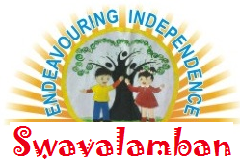The month of April has been observed as Autism Awareness month across the globe.
Autism belongs to a collection of developmental disorders known as the autism spectrum disorders (ASD). A spectrum disorder is a group of disorders with similar features. While one person may have mild symptoms, another might have more severe ones.
Autism is a severe developmental disability that generally begins at birth or within the first three years of life. It is the result of a neurological disorder that changes the way the brain functions — causing delays or problems in many different skills from infancy to adulthood.
The children and adults with autism usually exhibit difficulties in :
1. social interaction
2. verbal and non-verbal communication
3. interested in odd, repetitive, or restricted activities
While the majority of autistic children look completely normal, they differ from other children by engaging in perplexing and distressing behaviors.
Warning signs in Babies are:
• not babble or coo by 12 months of age
• not gesture, such as point or wave, by 12 months of age
• not say single words by 16 months
• not say two-word phrases on his or her own (rather than justrepeating what someone else says) by 24 months
• lost any language or social skills (at any age)
• not establish or maintain eye contact
• not make facial expressions or respond to your facial expressions
Symptoms of Autism are:
• Difficulty with verbal communication, including problems using and understanding language
• Inability to participate in a conversation, even when the child has the ability to speak
• Difficulty with non-verbal communication, such as gestures and facial expressions
• Difficulty with social interaction, including relating to people and to his or her surroundings
• Difficulty making friends and preferring to play alone
• Unusual ways of playing with toys and other objects as only lining them up a certain way
• Difficulty adjusting to changes in routine or familiar surroundings, or an unreasonable insistence on following routines in detail
• Repetitive body movements, or patterns of behavior, such as hand flapping, spinning, and head banging
• Preoccupation with unusual objects or parts of objects
Children with autism do not follow the typical patterns of child development. In some children, hints of future problems may be apparent from birth. In most cases, the problems in communication and social skills become more noticeable as the child gets older (between 12 and 36 months) and starts lagging behind other children of the same age.
Hence it is very essential to identify these early signs and symptoms in children.
Remember, the earlier the diagnosis, the better is prognosis…
PP
facebook.com/swavalambanchildrenrehab




 +91-94 24 851 514
+91-94 24 851 514






